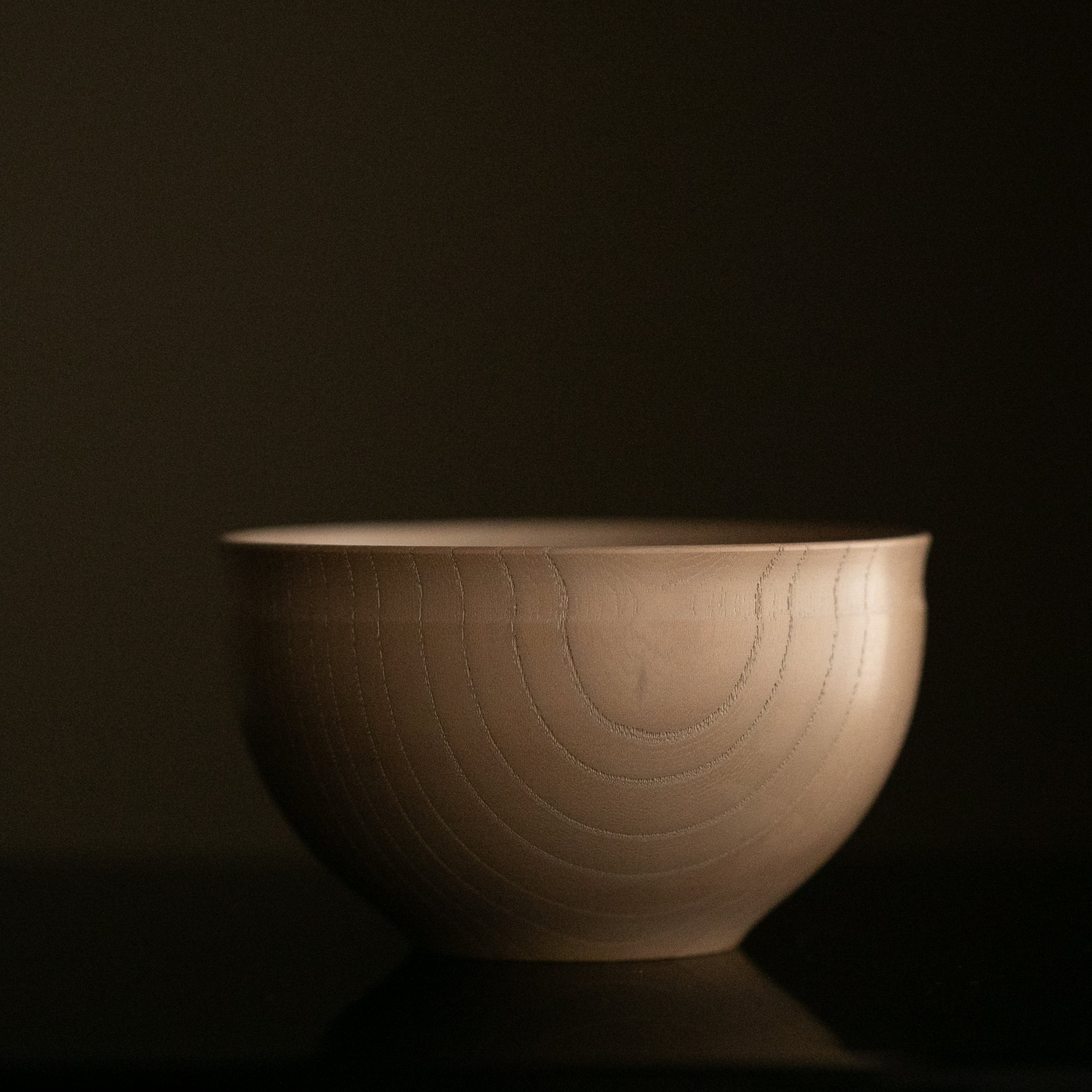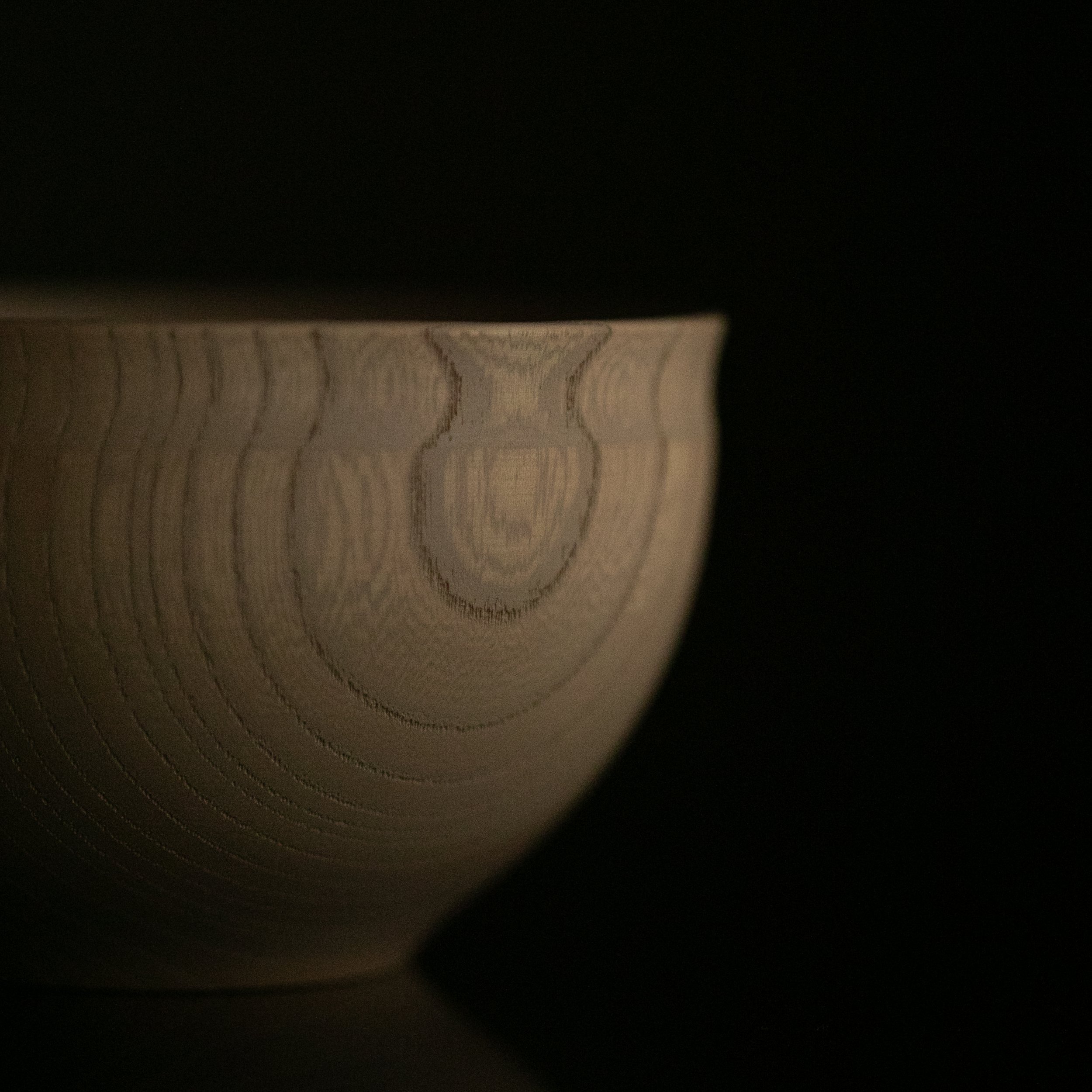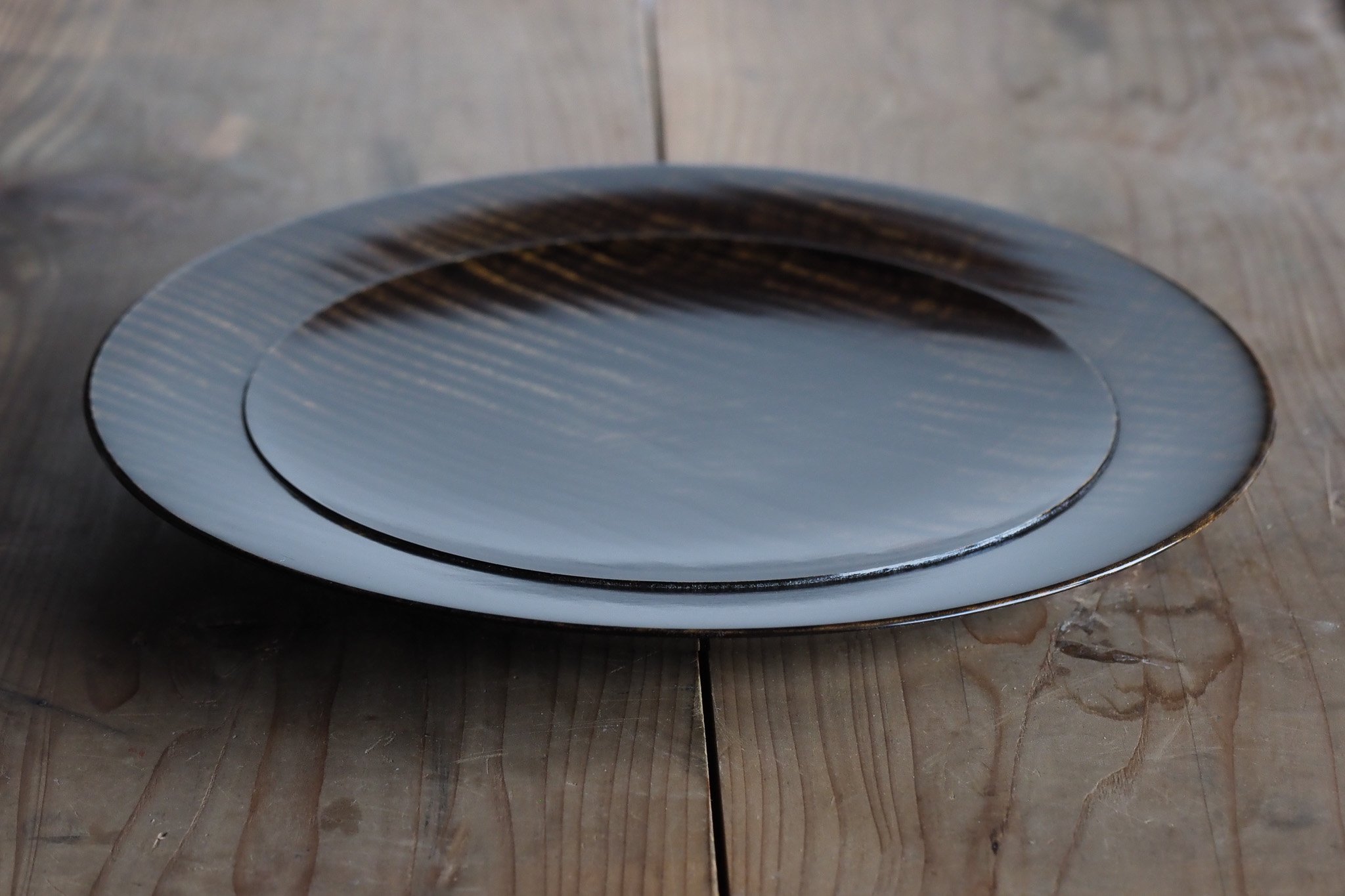black urushi plate
Made by Rabea Gebler
This black wooden plate was lacquered with the Mehajiki Nuri Technique. The two most commonly seen urushi surfaces are usually a thin translucent film of lacquer, revealing the wood underneath or a fully covering coloured surface of lacquer, which does not allow for the wood to show through. Mehajiki Nuri creates a surface somewhere in between; a rather thick film of black lacquer was applied to an unprimed piece of Keyaki Wood, which absorbed the lacquer through the grain. A texture remains, revealing the natural grain pattern of the wood, while still giving the strength and aesthetic quality of a thick black layer of urushi.
The plate is 24cm in diameter and was made on a Japanese lathe using local end grain Keyaki (Zelkova Wood). Finished with Urushi, the natural sap of the Urushi tree, this plate is water proof and food safe.
Made by Rabea Gebler
This black wooden plate was lacquered with the Mehajiki Nuri Technique. The two most commonly seen urushi surfaces are usually a thin translucent film of lacquer, revealing the wood underneath or a fully covering coloured surface of lacquer, which does not allow for the wood to show through. Mehajiki Nuri creates a surface somewhere in between; a rather thick film of black lacquer was applied to an unprimed piece of Keyaki Wood, which absorbed the lacquer through the grain. A texture remains, revealing the natural grain pattern of the wood, while still giving the strength and aesthetic quality of a thick black layer of urushi.
The plate is 24cm in diameter and was made on a Japanese lathe using local end grain Keyaki (Zelkova Wood). Finished with Urushi, the natural sap of the Urushi tree, this plate is water proof and food safe.
Made by Rabea Gebler
This black wooden plate was lacquered with the Mehajiki Nuri Technique. The two most commonly seen urushi surfaces are usually a thin translucent film of lacquer, revealing the wood underneath or a fully covering coloured surface of lacquer, which does not allow for the wood to show through. Mehajiki Nuri creates a surface somewhere in between; a rather thick film of black lacquer was applied to an unprimed piece of Keyaki Wood, which absorbed the lacquer through the grain. A texture remains, revealing the natural grain pattern of the wood, while still giving the strength and aesthetic quality of a thick black layer of urushi.
The plate is 24cm in diameter and was made on a Japanese lathe using local end grain Keyaki (Zelkova Wood). Finished with Urushi, the natural sap of the Urushi tree, this plate is water proof and food safe.
-
Approx. dimensions: 24 cm Diameter x 3 cm High
Material: Keyaki Wood, Blacck Urushi
Care Instructions: Hand wash with non-abrasive sponge and soap, food safe, store away from direct sunlight
Hand-made in Yamanaka Onsen, Japan
-
Urushi ware will rarely be damaged if it is used for its original purpose. However, there are a few points to remember regarding how it is washed and stored. If these guidelines are followed, Urushi ware will enhance the aesthetic quality of your life for many years to come.
Urushi Ware can be washed with a standard mild household detergent. Scrubbing with sponges, brushes, or steel wool will cause scratches and should be avoided.
Avoid using Metal Cuttlery on Urushi Surfaces, as it will leave scratches. Wooden Cutlery or Chopsticks are advised.
Do not microwave Urushi ware as the electromagnetic waves will damage the Piece.
Do not use automatic dishwashers and tumble dryers, as the rapid change in temperature can damage the wooden core of Urushi ware.
Avoid prolonged exposure to direct sunlight and store in a dark place.
-
Urushi is the sap of the Urushi tree. It has strong adhesive properties and is used as a coating material that, when hardened, becomes extremely durable and produces a glossy finish. It can be found in many parts of East Asia and has been used in Japan for several thousand years. When hardened, urushi is very resistant to acids, alcohol and alkalis and is durable enough to last several hundred years. Urushi vessels have been found in excavations dating from the Jomon period (8000-300 BC). Cases have even been reported where the original wooden base has completely rotted away, but the urushi coating has remained, retaining its colour and quality.Item description
-
Urushi Ware is made from completely natural materials. The lacquer is derived straight from a tree, filtered, and occasionally blended with natural pigments. The typical core of Urushi Ware is wood, which is sometimes reinforced with linen or cotton and coated in a mixture of Urushi and various soil powders. Charcoal is traditionally used for sanding. Urushi Ware that has been damaged can be repaired and re-lacquered. The lacquering method follows a tradition of hundreds of years and involves completely manual work. This produces a natural product that will endure for generations.
















